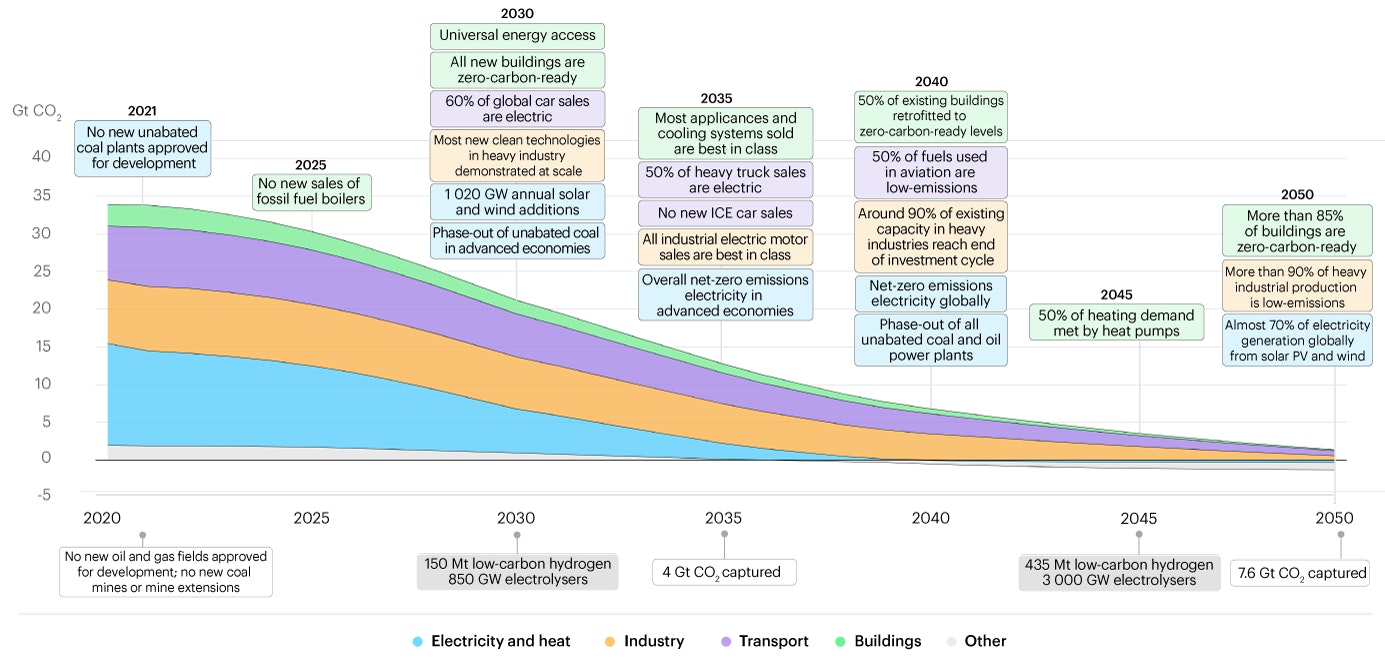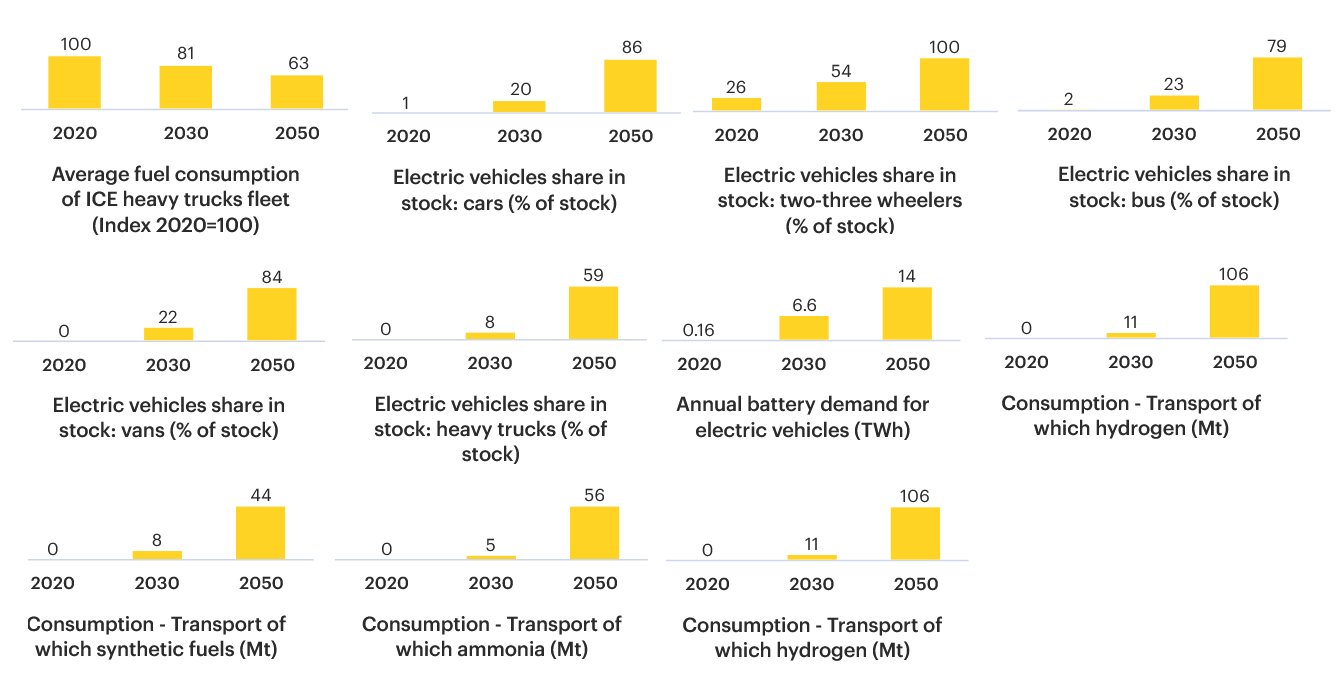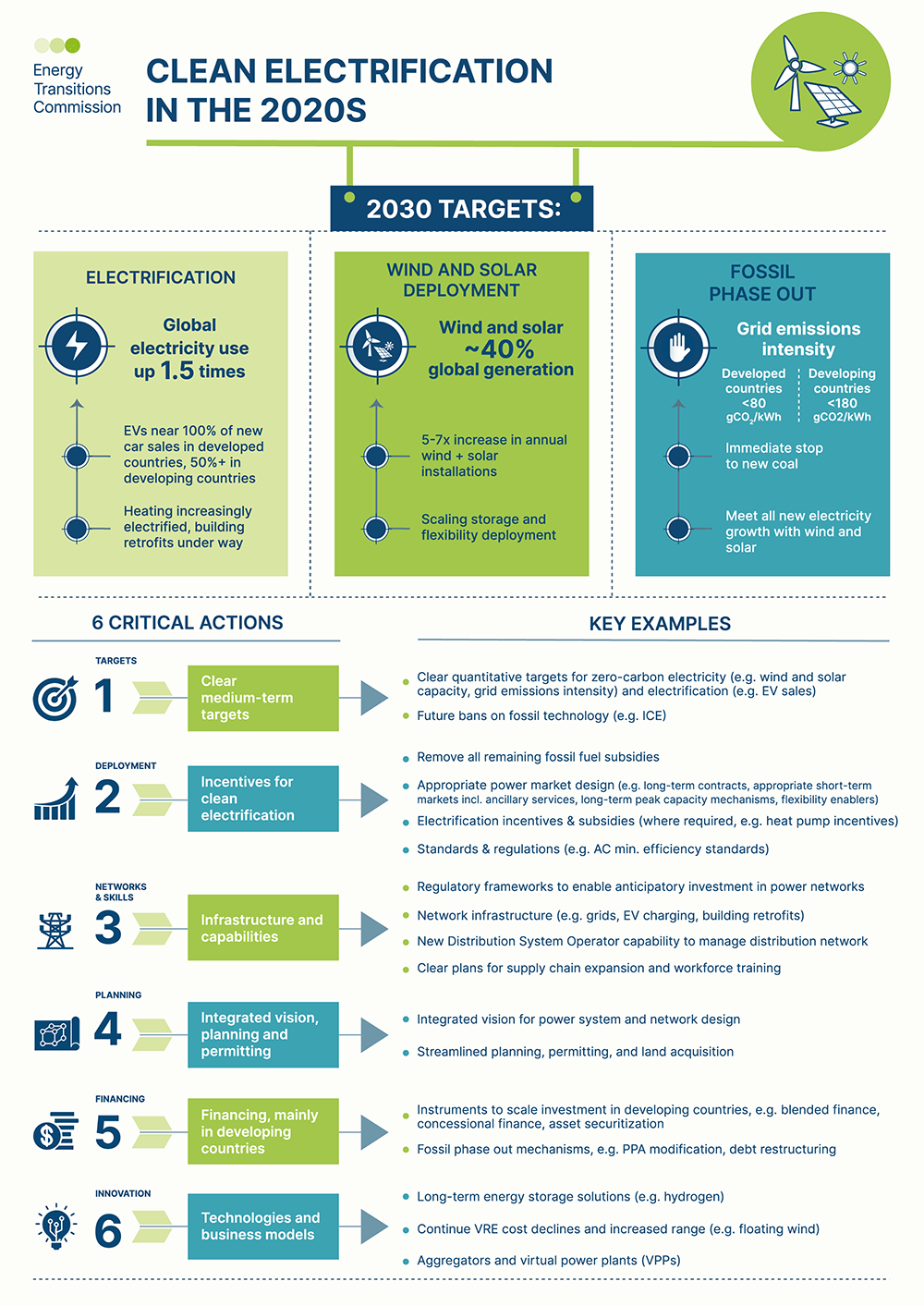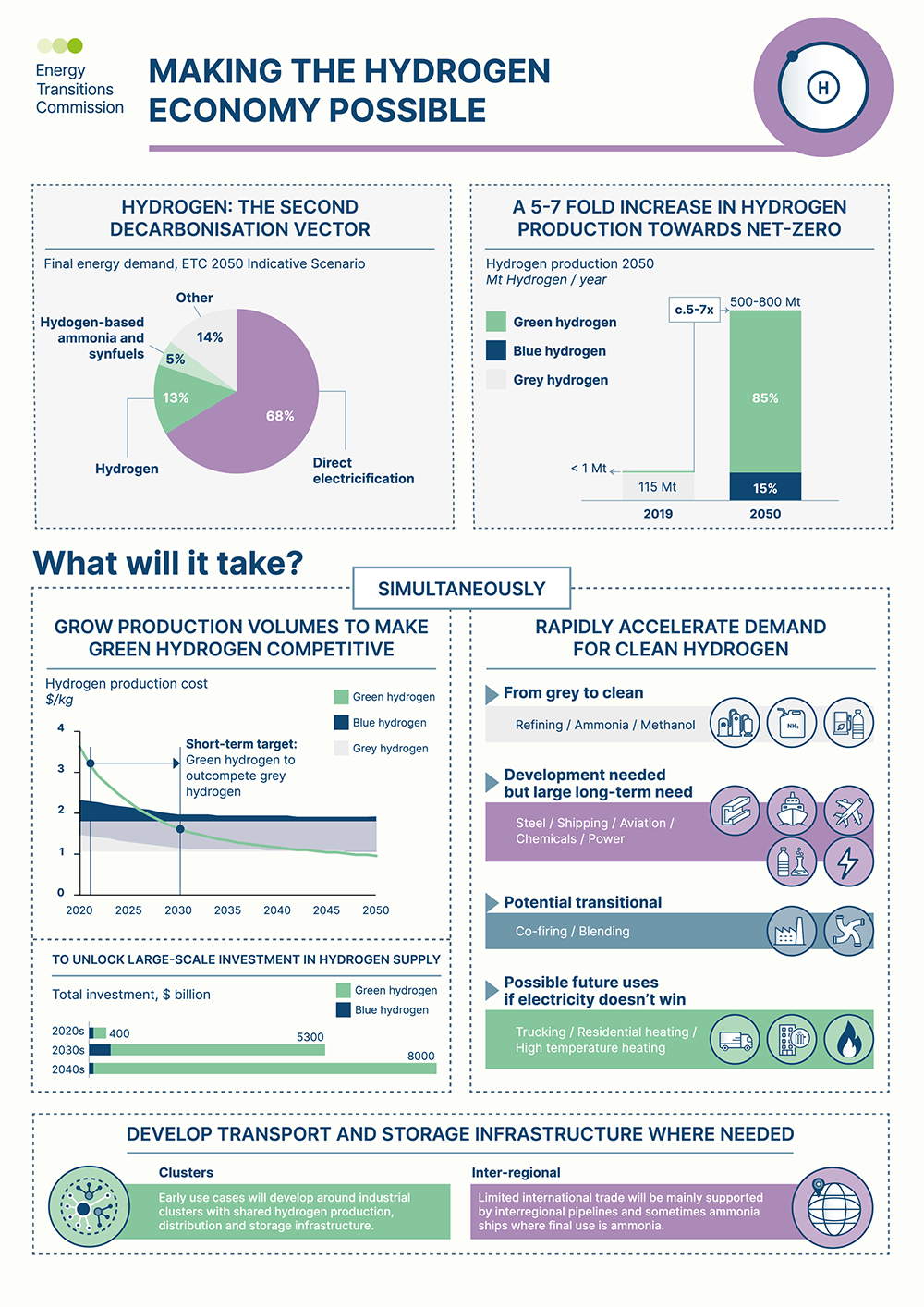

Hello friends! Here’s my monthly take on five most interesting developments in fuels and vehicles trends. What I try to do each month is select stories, studies and other interesting items that you may not have seen elsewhere but that really represents an important issue or trend that I think you would want to know about. Or I try to poke behind the hype to provide a deeper understanding of what’s happening. Items I selected this month include:
1. SHFT: EVs and Green Policies Aren’t Enough: Transport CO2 Emissions Set to Rise 16% by 2050 – global transport activity is expected to more than double by 2050, while traffic emissions will rise by 16% compared to 2015. And that’s even if existing commitments to cut down carbon emissions are carried out, says this article which discusses the International Transport Forum’s (ITF) latest projections on the future of transport. The ITF notes that based on 2015 figures:
If current policies remain in place between now and 2050:
Under ambitious policies that also lock in CO2 reduction windfalls from Covid-19:
Notably, 75% of all urban passenger transport emissions come from private cars, which intensifies the necessity for more sustainable alternatives. Similarly, freight emits more than 40% of all transport CO2.
IEA Net Zero Report
A separate report from IEA reviews outlines a pathway with the changes that are required to reach net-zero emissions globally by 2050, which IEA says are poorly understood. IEA notes the number of countries that have pledged to achieve net-zero emissions has grown rapidly over the last year and now covers around 70% of global emissions of CO2 but there are few policies in place to back up those pledges and certainly not enough to reach 1.5°C. Actually, if successfully fulfilled, the pledges to date would still leave around 22 billion tons of CO2 emissions worldwide in 2050, according to IEA. The continuation of that trend would be consistent with a temperature rise in 2100 of around 2.1 °C.
So, what has to happen to reach net zero emissions? An awful lot, as the figure below shows. Note the transport-related actions which include scaling up EV sales to reach 60% of car sales by 2030; for heavy-duty trucks, 60% by 2035. By 2040, 50% of fuels in aviation are low emission fuels. Internal combustion engine vehicles (ICEVs) would be phased out by 2035.

Source: IEA, May 2021
The figure below provides specific projections on fuel efficiency, EVs and hydrogen in transport.

Source: IEA, May 2021
IEA notes sustainable bioenergy delivers emissions reductions across a wide range of areas, including low-emissions fuels for planes, ships and other forms of transport, and the replacement of natural gas with biomethane to provide heating and electricity. The figure below summarizes IEA’s projections for bioenergy.

Source: IEA, May 2021
Other key findings include the following:
2. FuelsEurope: The Renewable & Low-Carbon Liquid Fuels Platform, towards Transport Fuels’ Transformation – The liquid fuels industry is Europe has come together to form the Renewable & Low-Carbon Liquid Fuels Platform, to among other goals, press the European Commission “to ensure EU Institutions to work out an enabling regulatory framework that values and supports all low-carbon technologies for the benefit of economies and consumers.” The group includes: Advanced Biofuels Coalition, Copa-Cogeca, eFuel Alliance, ePURE – European renewable ethanol, EBB-European Biodiesel Board, EWABA, Fediol, FuelsEurope, Nordic Blue Crude AS, UPEI. The group notes:
“Given the significance of the transport sector in the drive towards climate neutrality, a progressive uptake of renewable liquid fuels is essential to achieve these objectives. In this respect, renewable and low-carbon liquid fuels play a particularly important role, given their superior energy density, ease of storage and transport, and the widespread availability of existing infrastructures and vehicles for distribution and use of these fuels, which already contribute today with significant GHG emissions savings in the road transport sector.
The Renewable & Low-Carbon Liquid Fuels Platform believes that renewable and low-carbon liquid fuels are an essential and long-term technological solution. These fuels will continue to contribute to the decarbonisation of all transport modes, in road transport strategically complementing electrification and renewable gaseous fuels, and in aviation and maritime where they can be an enduring solution with growing international scale.”
This is a brilliant move. The Europeans can debate the contours of REDIII, for instance, but the game is bigger, and they know it. There are bigger fish to fry, so to speak. Now do the Americans, by contrast, get it? I don’t think they do. The industry is still debating topics like RFS2 reform, state and potentially federal clean fuel/low carbon fuel standards, octane improvement and higher ethanol/biofuel blending, while policymakers focus on electrification.
3. Wall Street Journal: Can E-Fuels Save the Combustion Engine? – Electric vehicles, hydrogen and now e-fuels are in the famous hype cycle. A few years ago, no one outside Germany and perhaps the U.S. national laboratories such as the National Renewable Energy Laboratory were even talking about e-fuels. This article discusses the growing interest in synthetic fuels produced by mixing hydrogen derived from renewable sources usually with captured carbon dioxide to create a virtually carbon-neutral version of fuels such as gasoline, diesel and kerosene.
Synthetic fuels have many advantages, according to supporters: They can be blended with conventional fuels—density and quality are similar—or replace them completely without altering existing pipelines, refilling stations and engines. They also can be easily transported and stored for extended periods. The big hurdle is cost. That is changing as renewable energy costs decline and governments step up investment in both carbon capture and storage (CCS) and hydrogen (green and blue). The article notes that costs will align when and if governments put into place a price on carbon.
Automakers such as Audi have been experimenting with e-fuels for several years, and airlines and shippers are as well. Exxon is working with Porsche to test e-fuels. Repsol is investing 60 million euros, equivalent to about $72 million, building a synthetic-fuels plant that uses CO2 captured from a nearby oil refinery in Bilbao. KLM conducted a test flight on e-fuels recently. The Heide refinery in Germany will supply e-fuels to Lufthansa replace 5% of the fossil-based kerosene used to fuel jets at the airport with synthetic kerosene as early as 2024 through wind energy generated locally. And in fact, the focus in Germany for sustainable aviation fuels (SAF) is on developing synthetic fuels. Maersk is focused on e-methanol and e-ammonia as a promising way to power its fleet in the future and will have its first carbon-neutral vessel on the ocean by 2023.
4. The Verge: EV Charging in the U.S. is Broken. Can Joe Biden Fix It? – Here’s the thing about EV charging in the U.S. (and I suspect, the EU and even China): the focus by policymakers has been on expanding charging, but existing public charging is not that great, as highlighted in this story. There are approximately 41,000 public charging stations in the U.S., with more than 100,000 outlets. The article notes:
“But finding one that actually works or isn’t locked inside a gated parking garage can be a bit of a scavenger hunt. The charging experience in the U.S. is almost comically fragmented, especially for non-Tesla owners. While Tesla’s Supercharger network has been praised for its seamless user experience and fast charging ability, the opposite appears to be true for pretty much everyone else.”
The White House has said it will spend at least $15 billion to begin rolling out the new charging stations. But experts say far more will be needed to shore up charging infrastructure to meet the growing demands of EV ownership.
Wedbush Securities has estimated that at least $60 billion will be needed to build 500,000 chargers by the end of 2030, as Biden has stated. Another analysis by industry consultant AlixPartners said $50 billion would be needed to grow the US charging network to meet the demand within the next decade. That means Biden will need at least $35 billion more, either from private investments or state and local government matching funds, if he is to meet his goal.
Installing EV chargers can be expensive, depending on the level of charging that’s being offered. The higher the level, the quicker the charge and the more expensive it is to install. A public Level 2 charger might cost $2,000 out of the box, but a DC fast charger of 150kW or more can cost between $100,000 and $250,000.
Other issues emerged in my experience completing a report on installation and operation policies at the state and local levels in the U.S. for the Fuels Institute’s Electric Vehicle Council and a second forthcoming guide for prospective site hosts. For example, permitting the installation of charging stations can be long and cumbersome – even in jurisdictions like California with streamlined permitting requirements. Some states and localities have multiple layers of regulation in place, while others have no regime at all. Adjacent localities may have different requirements. And in another example, demand charges from utilities can kill the business case for charging (though I believe that is an issue that will be addressed over time).
One option discussed in this article is the creation of a federal “make ready” program, which would bring down the costs and potentially complications of installing EV charging infrastructure. (Make ready programs are those in which public utilities and local governments identify sites that are intended for EV charging and allow companies to submit bids for installation.) Another solution is the ISO’s Plug and Charge standard (ISO 15118), which will allow an EV to automatically identify and authorize itself to a charging station on behalf of the driver. Mercedes is putting this functionality into its EQS.
In addition, GM’s Ultium Charge 360 will integrate GM’s own vehicle apps and software with a variety of third-party charging services, such as Blink, ChargePoint, EVgo, Flo, Greenlots, and SemaConnect. The goal is to create a seamless experience in which an owner of a GM electric vehicle can drive up to a station, plug in, and start charging without having to juggle multiple apps or third-party memberships.
5. Climate Action: Energy Transitions Commission: Clean Electrification and Hydrogen Can Deliver Net-Zero By 2050 – The Energy Transitions Commission (ETC), a coalition of more than 45 leaders from global energy producers, energy industries, financial institutions and environmental advocates – including ArcelorMittal, Bank of America, BP, Iberdrola, Ørsted, Volvo Group and the World Resources Institute among others – released two new reports analyzing the feasibility of achieving a net zero GHG economies by 2050 and the actions required in the next decade to put this target within reach. One report focused on electrification; the other, hydrogen.
The ETC says clean electrification will be at the heart of this transformation enabled by the rapidly falling costs of renewable energy, with a complementary role for clean hydrogen technology in sectors that are difficult or impossible to electrify. Electricity could represent up to 70% of final energy demand by 2050, versus 20% today, with total electricity use expected to grow as much as 5 times in the coming decades. Transitioning to clean electricity as the main source of final energy represents the cheapest and most efficient way to decarbonize economies, according to ETC. The rapidly falling costs of renewables and storage solutions make it possible to achieve the required massive expansion of clean power systems at low cost, according to the reports.
The ETC states that this is within reach if clear national strategies for decarbonization are put in place and appropriate power market design unlocks private financial flows. Investments in renewable power, primarily wind and solar, will represent the vast majority (around 80%) of total investments required to achieve a net zero economy. The infographic below shows the kinds of actions that governments will have to take. Examples include mandates on renewable energy, bans on internal combustion engine vehicles, removing all remaining fossil fuel subsidies, streamlined permitting, energy storage solutions, and much more.

Source: Energy Transitions Commission, May 2021
What about hydrogen? The infographic below summarizes what it will take to commercialize green hydrogen. By 2050, a zero-carbon economy could consume 500 to 800 Mt of zero-carbon hydrogen. ETC says new production methods will need to be matched by developments in hydrogen transport and storage, with opportunities to produce hydrogen in low-cost locations and transport it for end use elsewhere. Investments could amount to almost $15 trillion between now and 2050 – peaking in the late 2030s at around $800 billion per annum, according to ETC. Eighty-five percent of this cost relates to the required increase in electricity generation.

Source: Energy Transitions Commission, May 2021
Tammy Klein is a consultant and strategic advisor providing market and policy intelligence and analysis on transportation fuels to the auto and oil industries, governments, and NGOs. She writes and advises on petroleum fuels, biofuels, alternative fuels, automotive fuels, and fuels policy.